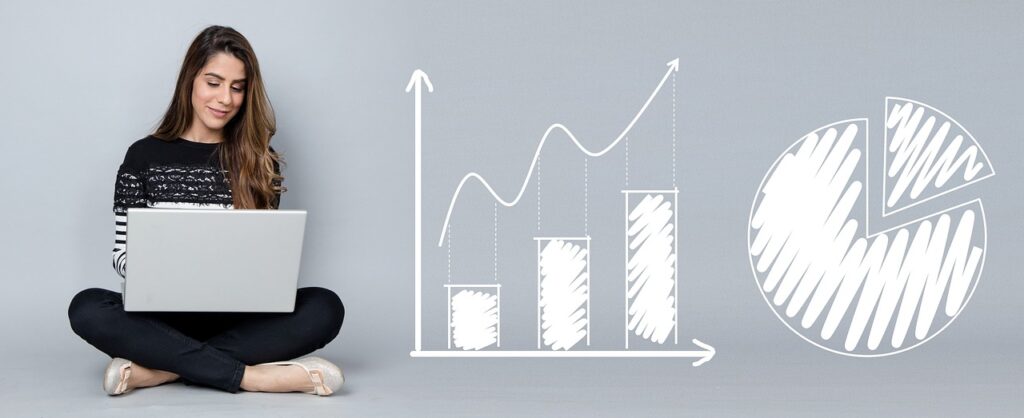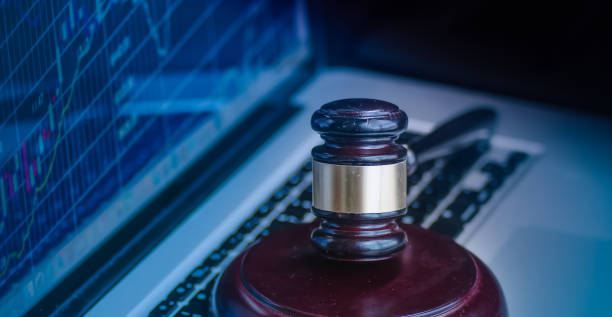In today’s complex legal landscape, the role of predictive analytics in litigation outcomes cannot be overstated. It has evolved from being a mere technological novelty to an indispensable tool that is revolutionizing the way legal professionals approach and strategize litigation. This article delves deep into the multifaceted aspects of predictive analytics, its applications, challenges, and the profound impact it has on the legal realm.

Understanding Predictive Analytics in Litigation
Predictive analytics, in the context of litigation, is the application of statistical algorithms and machine learning techniques to analyze historical data and predict the likely outcomes of legal cases. This powerful tool assists lawyers, judges, and stakeholders in making informed decisions by quantifying uncertainties and highlighting critical patterns that might otherwise go unnoticed.
The Data-Driven Paradigm
At the core of predictive analytics lies the vast reservoir of legal data. This includes case precedents, judges’ rulings, statutes, and even the behavior of opposing counsel. By leveraging this data, legal professionals can gain invaluable insights into how various factors influence litigation outcomes. For example, a lawyer can use predictive analytics to assess the likelihood of success for a specific legal strategy in a particular jurisdiction, thereby optimizing their approach.
Moreover, this data-driven paradigm doesn’t merely benefit lawyers; it also offers advantages to clients and the legal system as a whole. By harnessing predictive analytics, clients can receive more accurate assessments of their legal situations, helping them make informed decisions about pursuing or settling a case. Additionally, it can assist courts in managing their dockets more efficiently, identifying cases that are likely to settle and those that might require more resources for litigation.
Beyond Crystal Ball Gazing
It’s important to note that predictive analytics isn’t about making absolute predictions akin to a crystal ball. Instead, it provides probabilities and trends that help legal practitioners make more informed decisions. For instance, a litigation attorney might use predictive analytics to estimate the probability of winning a case based on factors such as case complexity, judge’s history, and past legal precedents.
Predictive analytics empowers legal professionals to take a more strategic and data-driven approach to their work. They can use these insights to develop litigation strategies that are tailored to the unique circumstances of each case, increasing their chances of success. Furthermore, this approach promotes transparency and fairness within the legal system, as decisions are grounded in objective data rather than intuition or guesswork. Overall, the data-driven paradigm in the legal field is transforming the way lawyers operate, making the practice of law more precise, efficient, and equitable.
Applications of Predictive Analytics in Litigation
The applications of predictive analytics in litigation are vast and transformative. It impacts various stages of legal proceedings, from case assessment to courtroom strategies.
Case Assessment and Strategy Development
Before diving into litigation, lawyers can employ predictive analytics to assess the strength of their case in more depth. This involves not only understanding potential challenges and opportunities but also creating a comprehensive strategy that maximizes the chances of a favorable outcome. By analyzing historical case data with similar attributes, legal professionals can gain valuable insights into how various factors might influence their specific case. This includes examining past rulings, case precedents, and the performance of different legal strategies.
This data-driven approach allows lawyers to identify potential weaknesses in their case and develop strategies to mitigate them. For instance, if predictive analytics reveals that cases with similar characteristics tend to settle out of court, an attorney may consider alternative dispute resolution methods rather than pursuing a lengthy trial. Conversely, if the data suggests a strong likelihood of success in court, they can prepare a robust litigation strategy. Furthermore, predictive analytics enables lawyers to anticipate the tactics opposing counsel may employ, allowing for better preparation and adaptability during the course of the litigation.
Jury Selection and Voir Dire
Selecting an impartial jury is a crucial aspect of litigation, as the composition of the jury can significantly impact the outcome of a trial. Predictive analytics plays a valuable role in this process by analyzing potential juror profiles and predicting their likely biases based on a range of demographic and behavioral data. This goes beyond traditional methods of jury selection, which often rely on gut instincts and limited information.
Predictive analytics allows lawyers to make more informed decisions during voir dire, the process of questioning potential jurors to identify potential biases or conflicts of interest. By leveraging data analysis, attorneys can identify jurors who may have preconceived notions or biases that could affect their objectivity. This helps ensure a fair trial by allowing both sides to strike jurors who may not be impartial. Ultimately, predictive analytics in jury selection helps lawyers build a jury that is more likely to provide a fair and unbiased assessment of the case, enhancing the integrity of the legal process.
Legal Research and Brief Analysis
Legal research is a fundamental aspect of building a strong legal case, but it can be incredibly time-consuming and exhaustive. This is where predictive analytics tools can be a game-changer for lawyers. These tools can assist legal professionals in sifting through vast legal databases, identifying relevant precedents, and analyzing case law efficiently. By leveraging predictive analytics, attorneys can significantly accelerate the research process, allowing them to focus more on crafting compelling legal arguments and developing innovative strategies.
Predictive analytics not only speeds up the research process but also enhances its accuracy. These tools can sift through enormous volumes of legal documents and pinpoint the most relevant and recent precedents. This means lawyers are less likely to overlook critical cases or miss out on important legal nuances that could impact their arguments. In essence, predictive analytics serves as a powerful assistant, providing attorneys with the data-driven insights they need to build stronger cases and ultimately better serve their clients.

Settlement Negotiations
Settlement negotiations are a critical juncture in the legal process, often determining whether a case proceeds to trial or gets resolved outside the courtroom. Predictive analytics can play a pivotal role in this phase by providing lawyers with data-driven insights into the potential outcomes of litigation. Armed with this information, attorneys can negotiate from a position of strength and achieve more favorable settlements for their clients.
Predictive analytics can help lawyers assess the risks and rewards of going to trial versus settling. By analyzing historical data and considering factors such as the judge’s track record, case complexity, and past legal precedents, attorneys can make informed decisions about the likely outcome of a case. This enables them to provide realistic advice to their clients and engage in negotiations with a clear understanding of the potential risks and benefits. Ultimately, predictive analytics in settlement negotiations empowers lawyers to pursue the best possible outcome for their clients, whether that involves reaching a fair settlement or taking the case to court.
Overcoming Challenges in Predictive Analytics for Litigation
While predictive analytics holds immense promise, it is not without its challenges in the legal domain.
Data Quality and Privacy Concerns
The quality and privacy of legal data pose substantial challenges in the adoption of predictive analytics within the legal profession. Legal professionals must meticulously ensure that the data they use for predictive analytics is not only comprehensive but also accurate, up-to-date, and compliant with privacy regulations. Data accuracy is paramount since any inaccuracies or omissions can lead to flawed predictions and potentially adverse legal outcomes. Therefore, a rigorous data validation process is essential to identify and rectify inconsistencies or biases within the dataset.
Privacy concerns are equally critical in the legal domain, given the sensitive nature of legal information. Lawyers and legal tech developers must implement robust security measures to safeguard sensitive client data, ensuring it remains confidential and protected from unauthorized access. Compliance with privacy regulations, such as GDPR or HIPAA, is a legal obligation that legal professionals must adhere to when using predictive analytics. Addressing these data quality and privacy concerns is vital for building trust in predictive analytics tools and ensuring their responsible use within the legal field.
Model Interpretability
The black-box nature of some predictive analytics models can be a significant barrier to their widespread adoption in the legal profession. Lawyers and judges may be hesitant to rely on predictions they cannot interpret or understand fully. This lack of transparency can lead to skepticism and reluctance to embrace these powerful tools. Consequently, there is a growing need for the development of more transparent and explainable models that can be easily understood by legal professionals.
Explainable AI (XAI) techniques are emerging as a solution to this challenge. XAI methods aim to make complex predictive models more interpretable by providing insights into how the model arrives at its conclusions. This not only enhances trust but also empowers legal professionals to challenge or validate the model’s predictions based on their legal expertise. By bridging the gap between data science and legal practice, interpretable models can facilitate a smoother integration of predictive analytics into legal decision-making processes, ultimately benefiting clients and the legal system as a whole.
Ethical and Legal Considerations
The ethical and legal considerations surrounding predictive analytics in the legal field are complex and multifaceted. Questions about the fairness of algorithms, potential biases in predictive models, and the role of human judgment in legal decision-making are subjects that require careful consideration. Legal professionals must grapple with the ethical implications of relying on data-driven predictions, particularly when these predictions may affect individuals’ rights and freedoms.
To address these concerns, it’s essential for the legal community to establish clear guidelines and ethical frameworks for the use of predictive analytics. This includes implementing measures to detect and mitigate biases in algorithms, ensuring that human judgment remains a fundamental component of legal decision-making, and regularly reviewing and updating ethical standards as technology evolves. By proactively addressing these ethical and legal considerations, the legal profession can harness the potential of predictive analytics while upholding its commitment to justice, fairness, and transparency.
The Future of Predictive Analytics in Litigation
The future of predictive analytics in litigation is brimming with possibilities. As technology advances and legal professionals become more adept at harnessing its power, we can expect several developments.
Enhanced Personalization
The future of predictive analytics in the legal field holds the promise of enhanced personalization. As these tools continue to evolve, they will become increasingly tailored to individual cases and the unique preferences of lawyers. This level of personalization will enable legal professionals to fine-tune their strategies and arguments with pinpoint accuracy, leading to more effective advocacy.
Imagine a scenario where a lawyer can input specific case details and receive predictions that are not only based on historical data but also consider the lawyer’s past successes and preferred legal approaches. This level of customization allows attorneys to receive insights that align precisely with their expertise and the nuances of the case at hand. It empowers legal professionals to make data-driven decisions that are finely tuned to their individual strengths and the specific circumstances of each case, ultimately leading to more successful outcomes for their clients.
Integration with Legal Research Tools
The integration of predictive analytics with existing legal research tools represents a significant advancement in the legal profession. As these tools seamlessly merge with well-established research platforms, they will become more accessible to lawyers, both in terms of ease of use and availability. This integration streamlines the research process, allowing attorneys to harness the power of predictive analytics without the need for specialized training or extensive data analysis skills.
Picture a legal research tool that not only provides access to case law and statutes but also offers predictive insights alongside search results. Lawyers can quickly assess the likelihood of success for different legal strategies, identify potential challenges, and uncover relevant precedents—all within a single platform. This convenience saves valuable time and enables attorneys to provide better counsel to their clients by offering data-driven advice based on the most up-to-date legal information. By integrating predictive analytics with existing research tools, the legal profession can harness the full potential of data-driven decision-making, ultimately enhancing the quality of legal services and the efficiency of the legal process.
Improved Ethical Frameworks
With a growing awareness of ethical concerns, the legal community will develop robust frameworks to ensure that predictive analytics aligns with legal ethics and fairness principles. This will pave the way for responsible and ethical use of technology in the legal sector.

In conclusion, predictive analytics is not merely a buzzword but a transformative force in the realm of litigation. It empowers legal professionals to make data-driven decisions, streamline processes, and ultimately enhance the quality of legal services. As the legal community continues to embrace and adapt to this technological revolution, the future of litigation appears brighter and more efficient than ever before.

